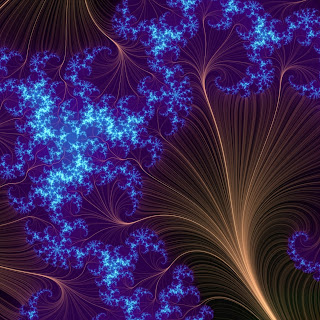This tissues are capable of excitability and
conductivity. It consists of excitable cells
and supporting cells,which in the central nervous system are the neuroglial cells and in the peripheral nervous
system are the Schwann
cells.The neuron
is the functional unit of the nervous system and consists of a cell body and
processes, usually an axon and one or more dendrites. The cell bodies are situated in
the central nervous system or in peripheral ganglia.
They possess a large nucleus and well-marked cellular inclusions. The axon begins at a small axon hillock on the cell
body and carries impulses away from the cell body.This often long, slender
process ends by dividing into manybranches that have small terminal knobs, boutons, related to the cell bodies or
branches of other neurons. The relationship is known as a synapse and may be either facilitatory or
inhibitory, depending on the neuron of origin, and possibly on the receptor
area of the second neuron. A rather specialized synapse is formed when a nerve
ends on a muscle fibre at a motor endplate.Axons may give off one or more short collateral
branches.They are myelinated or unmyelinated. The myelin is interrupted
about every millimetre or so by a constriction called the
node of
Ranvier. In the
peripheral nervous system each internodal segment of sheath is produced by a Schwann cell,
the nucleus of which is seen on its surface. These
cells play an important role in peripheral nerve regeneration. Fibres of the
peripheral nervous system are also covered by a thin
fibrous membrane, the neurilemma. In the central nervous system oligodendroglia take
the place of the Schwann cells.Dendrites are usually short unmyelinated
processes carrying membrane depolarizations to the cell body. The volume over which
the dendrites of a single cell extend is known as the dendritic field. Afferent
neurons carry information towards the central
nervous system, and efferent neurons carry
instructions
away from it. Within the central nervous system
afferent and efferent neurons are often connected by many intercalated neurons.
The neurons are organized to form the central and
peripheral nervous systems. The former comprises the brain and spinal cord and
the latter the cranial nerves, spinal nerves and autonomic nervous system .A
group of neurons in the central nervous system is called a nucleus,
and outside the central nervous system (CNS) such a
group is known as a ganglion. Within the CNS are neuroglial
cells,variously known as astrocytes, oligodendroglia and microglia,
and these make up almost half of the brain substance.
Astrocytes
are stellate cells with large nuclei and numerous processes, which may be of
the thick protoplasmic variety, as found mainly in the grey matter, or the thin
fibrous variety found mainly in the white matter. Some of the processes end on
blood vessels, and the astrocytes are thought to be concerned with fluid
balance in the central nervous system and
with the nutrition of the neurons. Oligodendroglia are
oval dark-staining cells possessing few processes. They produce
the myelin of the central nervous system. Microglia
are small mobile phagocytic cells and form part of the macrophage system.
Ependymal cells are columnar in shape and line
the cavities of the brain and spinal cord. In certain regions the ependyma is
modified to form the choroid plexuses of the brain, which produce the
cerebrospinal fluid.













No comments:
Post a Comment